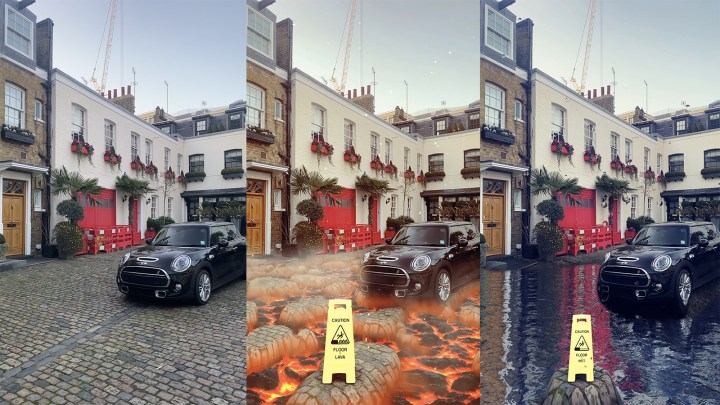
Kids who grew up pretending the floor was hot lava can now actually turn the ground into a molten mess using a smartphone and Snapchat’s newest augmented reality technology. Snap Inc. has launched ground segmentation World Lenses, a new tool that recognizes where the ground is in a photgraph in order to douse it with water or, yes, turn it into hot lava.
The feature demonstrates just how far Snapchat’s augmented reality technology has come from just simply placing a dancing hot dog into a scene. The ground segmentation technology uses machine learning to identify which parts of the image are the ground and which are not, a challenge that involved teaching a computer the geometry and semantics of the real world.
Once the camera recognizes what the ground is, the AR lenses will turn the ground into hot lava, complete with steam and unscathed patches of ground to jump on. Or, the “floor is water” lens will flood the ground and include a reflection of everything else in the scene.
The new World Lenses are a result of an internal version of Lens Studio, the desktop platform that allows users to create their own lenses. The internal version allowed Snap team members to build the lenses; Snap says the ability to recognize the floor may eventually be part of the widely available Lens Studio as well.
Snap calls the ground segmentation “a natural evolution and next step for us in understanding what the camera can see and helping our community learn more about the world around them.” Snapchat launched World Lenses in 2017, expanding beyond the selfie lenses that use facial recognition to apply the filters that are now what Snapchat is most known for. The ground segmentation expands on options like sky replacement filters. Other World Lenses that are more advanced than that now-iconic dancing hot dog include the option to transform iconic landmarks using AR.
To find the ground segmentation lenses, update Snapchat, then head into the camera view with the rear-facing camera. (Double tap if you are in selfie mode to switch cameras.)Tap the camera screen to bring up the lens carousel and look for the new options called “floor is water” and “floor is lava.”




